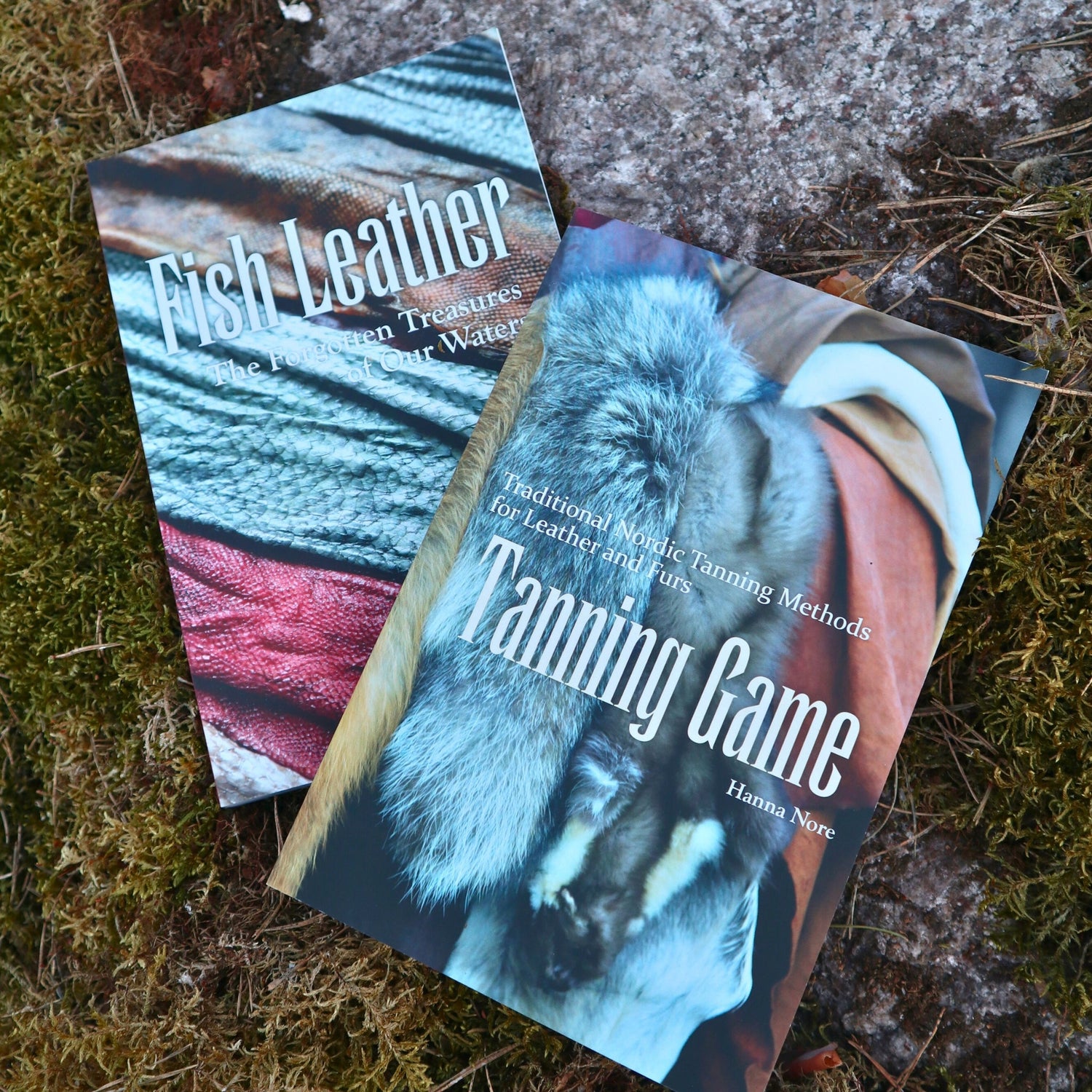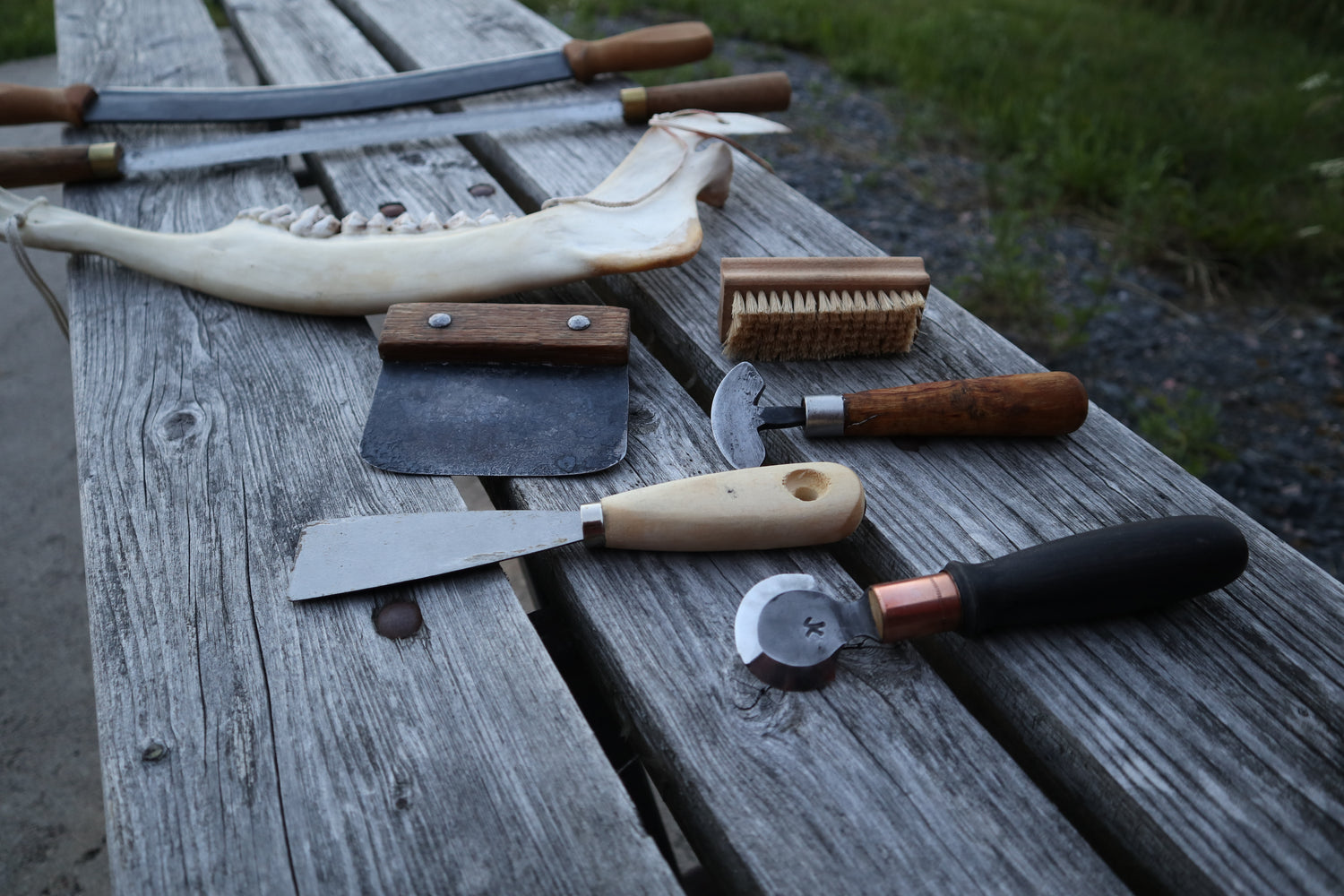
Q&A with Hanna Nore
Liisa SauriAuthor Hanna Nore is a tanner, artisan and teacher from the Finnish archipelago. In our Q&A Hanna tells her story and shares how her first book 'Tanning Game' came to be. You can follow Hanna on Instagram: @tanningbyhannanore
Question: How did you get interested in tanning?
Hanna: Leather swept me off my feet some 20 years ago. In the turn of the millennium I visited a Viking fair on the Åland islands, an international event, which offered crafts prepared with bone, horn and leather, among many other things. Everything had been made by hand with respect for traditional methods. I was enchanted.
On my way home I decided that this was my thing. I wanted to live and grow and evolve with these materials. I quickly noticed that there was a wealth of material available – bones, horns and raw skins were simply refuse for everyone else. Nobody saw the potential in these fascinating materials.
Question: How did you learn the carft?
Hanna: At the beginning of the 21st century knowledge about these materials and work techniques was very hard to come by, so it was a journey of exploration. I tried all sorts of things. The local hunting club was happy to donate leftover leg skins, raw deerskins and bones for my various experiments.
In 2007 I found myself on a year-long course, delving into the world of historical traditional tanning. My teacher was the Norwegian master tanner, Sofie Kleppe. I also studied to be a tailor, apprenticed with a cobbler and even spent some time sewing at a fur-sewing manufactory.
I looked for nuggets of information and people with skills all over the Nordic countries, and learned that tanning with fir-, oak- and willow-bark, urine, animal brain matter, buttermilk and rye flour was still practiced all over the world. I found third-generation tanners who had worked with traditional tanning their entire lives. Learning from them has been invaluable.

In the spring of 2020 I received my professional degree and received the title ‘Master of Traditional Tanning’ from Raisio Regional Education and Training Consortium.
I have been teaching tanning techniques in Axxell Brusaby vocational school on Kemiö island since 2010. Working as a teacher has given me a great deal of valuable experience as a tanner as well. While teaching, you learn to solve the type of difficult situations that invariably arise while tanning with traditional techniques.
Question: What made you decide to write a book about traditional tanning?
Hanna: I realized how fleeting this knowhow could be. This age-old tanners’ skill was in danger of vanishing. I wanted to revive this disappearing craft culture and share the knowledge of traditional tanning in all its diversity with others.
These are my ways of tanning skin, pelts and chamois. My goal is to bring traditional tanning into the present, because these nature-friendly tanning methods can be used to prepare ecological and ethical leather for modern uses. There are many methods out there in the world, and every tanner has their own way of working.

Question: How was the book Tanning Game born?
Hanna: Tanning Game is an international edition of my first book, Nahan jäljillä, published in Finnish in 2021. I wrote the book in 2020 and a local publisher Readme published it in Finland. The book has been very well received locally, and I got multiple requests for a translated version from my international contacts in the field.
Finally I decided to take the leap of faith and self-publish the book translated in English. The content of the Tanning Game is exactly the same as in the original Finnish book. Only minor changes have been made from an international reader's point of view.
The purpose of the book is the same in all language editions: to update the image people have of the value of game animals’ skins and increase appreciation for them. There are so many ways we could refine the skins of local game animals while simultaneously showing respect for their worth.

Hanna Nore
Hanna Nore is a master traditional tanner, teacher of traditional tanning methods and the author of Fish Leather and Tanning Game. She lives and works on Kimito Island in the Finnish archipelago.

